In-situ field tests
In-situ field tests include the standard penetration test (SPT), cone penetration test (CPT), flat plate dilatometer test (DMT), pre-bored pressure meter test (PMT), and vane shear test (VST), in which two of the most used methods are SPT and CPT.
The main purpose of the standard penetration test (SPT) is to provide an indication of the relative density of granular deposits, such as sands and gravels from which it is virtually impossible to obtain undisturbed samples. The great merit of the test, and the main reason for its widespread use is that it is simple and inexpensive. The soil strength parameters which can be inferred are approximate, but may give a useful guide in ground conditions where it may not be possible to obtain borehole samples of adequate quality like gravels, sands, silts, clay containing sand or gravel and weak rock.
The early applications of the cone penetration test (CPT) mainly determined the soil geotechnical property of bearing capacity. A friction sleeve is included to quantify friction to aid in determining soil cohesive strength. Most modern electronic CPT cones now employ a pressure transducer with a filter to gather pore water pressure data. The filter is usually located either on the cone tip (the so-called U1 position), immediately behind the cone tip (the most common U2 position) or behind the friction sleeve (U3 position). Pore water pressure data aids determining stratigraphy and is primarily used to correct tip friction values for those effects.
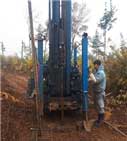 Actual photo of SPT
Actual photo of SPT
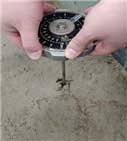 Actual photo of vane shear test
Actual photo of vane shear test
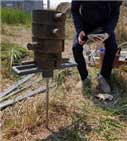 Actual photo of Sweden test
Actual photo of Sweden test
Spatial interpolation of SPT data
Due to the limited number of SPT borehole investigations at any given particular site, geotechnical engineers may often interpolate, extrapolate, or average from nearby existing available borehole locations to estimate the unknown subsurface parameters at any other point or location. Recently, Artificial Intelligence (AI) has become very popular and has been applied in many engineering problems because it allows the modeling of nonlinear processes. The Artificial Neural Networks (ANN) for spatial interpolation of SPT-N and soil profile data is used due to its various advantages and benefits compared with the other classification and estimation methods.
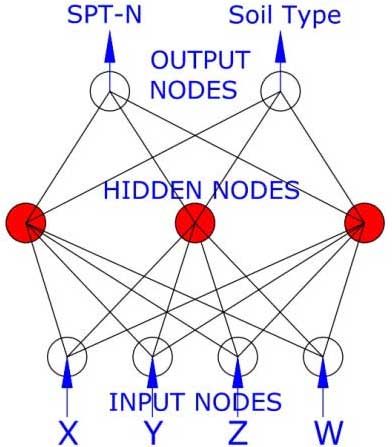 Artificial Neural Network (ANN) method
Artificial Neural Network (ANN) method
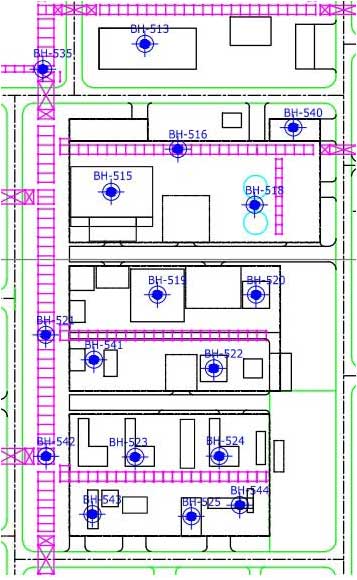 Sample area analyzed by ANN
Sample area analyzed by ANN
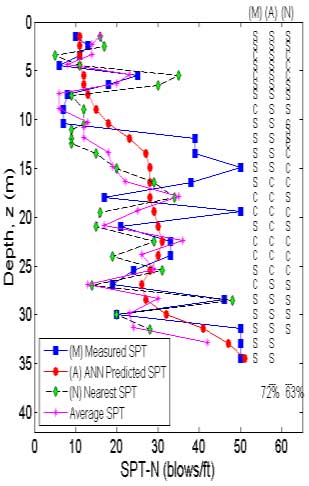 Comparison of measured and predicted SPT-N and soil profiles using ANN
Comparison of measured and predicted SPT-N and soil profiles using ANN
Laboratory tests
The occurrence and distribution of soils varies from location to location. The type of soil depends on the rock type, its mineral constituents and the climatic regime of the area. Soils are used as construction materials, and civil engineering structures are founded in or on the surface of the earth. Geotechnical properties of soils influence the stability of civil engineering structures. Therefore, assessment of geotechnical properties of subsoil at a project site by laboratory testing is necessary for generating relevant input data for design and construction of foundations for the proposed structures.
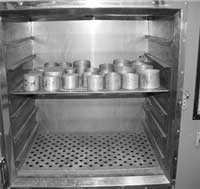 Oven drying of samples for water content measurement
Oven drying of samples for water content measurement
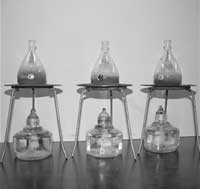 Specific gravity test
Specific gravity test
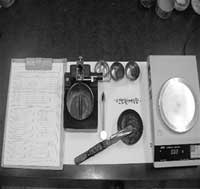 Atterberg test
Atterberg test
Shaking table test
Through shake table testing, the liquefaction mechanism of the Saemangeum dredged soil can be investigated at various conditions or scenarios, considering time-dependent behavior or response.
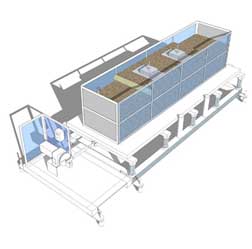 Shaking table test
Shaking table test
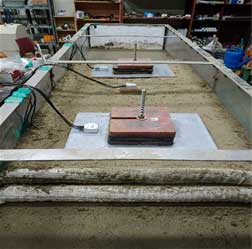 Shaking table test on the liquefaction mechanism a geotextile tube-reinforced embankment scale model
Shaking table test on the liquefaction mechanism a geotextile tube-reinforced embankment scale model
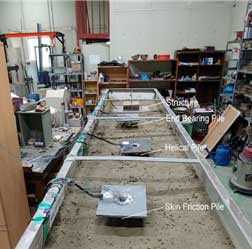 Shaking table test on the liquefaction response of various renewable energy foundation
Shaking table test on the liquefaction response of various renewable energy foundation










